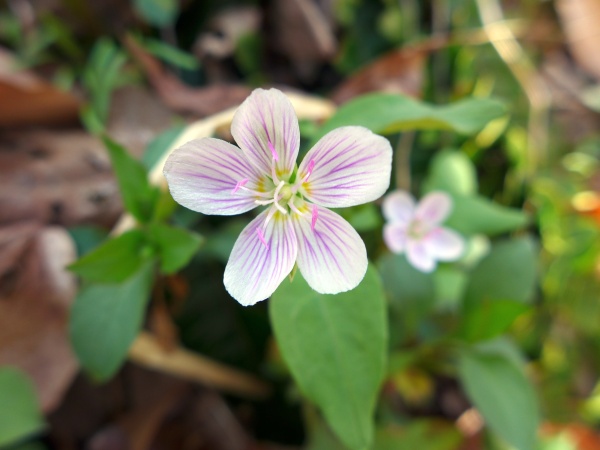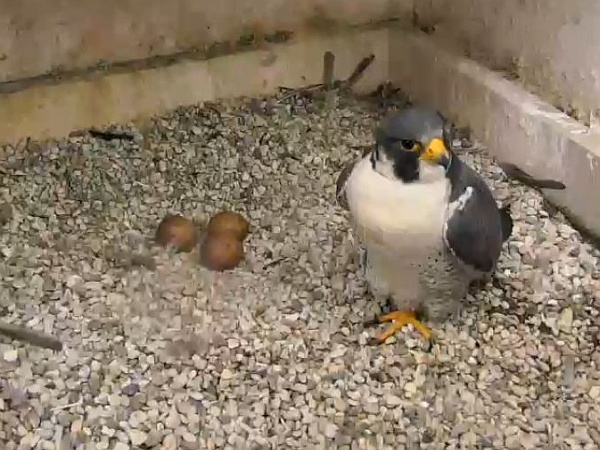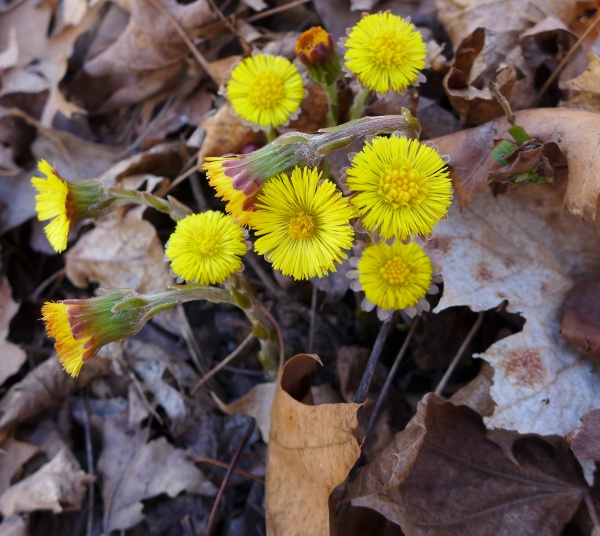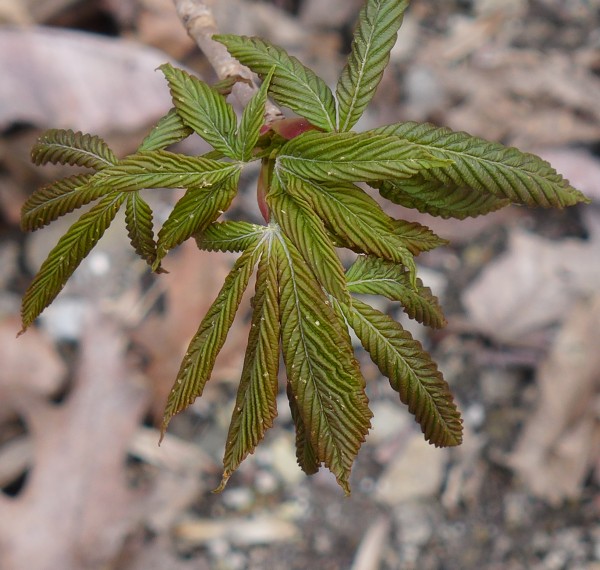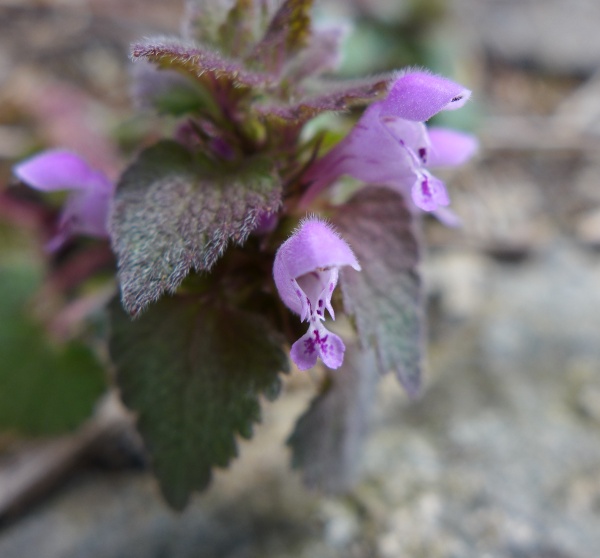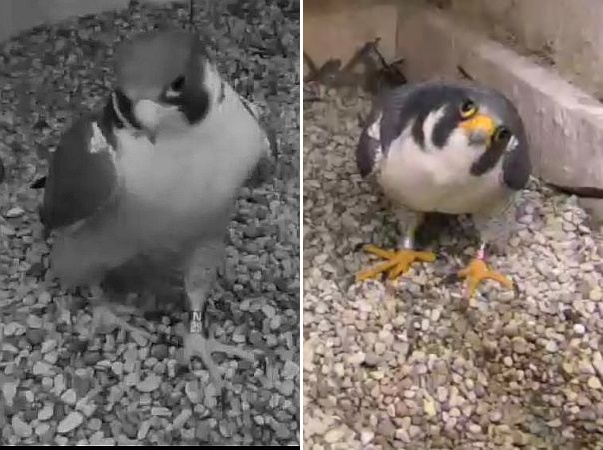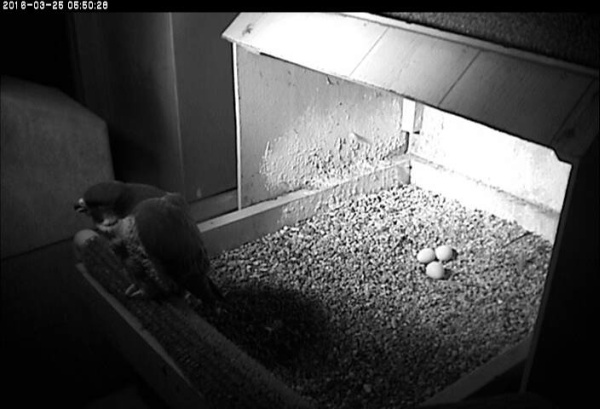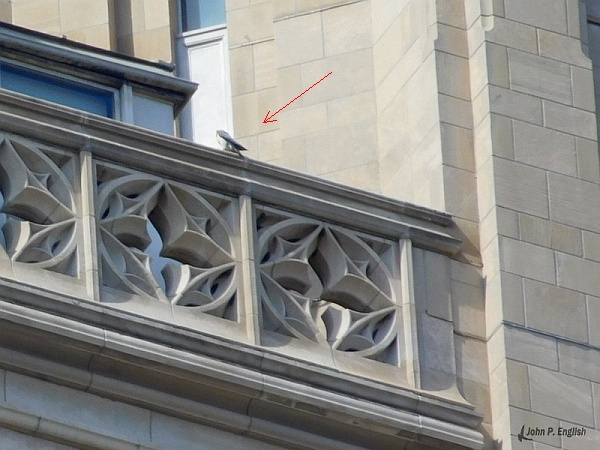
For months we thought the old red-tailed hawks’ nest under the Homestead Grays Bridge was abandoned, but last Sunday John English discovered it is very much occupied — by a great horned owl. John posted the photo above in the Duck Hollow Facebook group with this diagram of its location.

Dana Nesiti (EaglesofHaysPA) stopped by yesterday and got this beautiful shot of the mother owl. In this species, only the females incubate and brood. Father owl perches nearby during the day.

Dana watched for 45 minutes and was rewarded with a glimpse of the tiny owlet — the round white head at center-right of the nest. I’m no expert but my guess is this owlet hatched 1-2 weeks ago.

Meanwhile, not far away….
At midday on Monday Cathy Bubash posted a comment on my blog that there was an injured owl on the road at Schenley Park’s Anderson Playground. We traded email addresses and Cathy sent photos. Oh my! It’s not an injured adult. It’s a fledgling great horned owl!

He’s old enough to fly, though he isn’t very good at it. He appears to be about 8 weeks old.

I visited the area at 4:30pm and found the owl safely perched on a hillside tree below the playground. His parents could find and feed him overnight … but where were they?
In all my visits to Schenley Park I’ve never encountered a great horned owl and never seen a nest. I rechecked two abandoned red-tailed nests on nearby bridges. Nothing.
On Tuesday morning the owl was back on the asphalt at Anderson Playground so Public Works employees wisely called the PA Game Commission who collected the owl and delivered it to ARL Wildlife Center for evaluation.

It’s a good thing this owl was rescued. He’s not injured but he is emaciated. Did he have parents in Schenley Park?
Based on his age — two months older than our local owlets — I had a theory that he hatched in the South, perhaps the Carolinas, and was brought to Pittsburgh by someone who dumped him at the secluded end of the playground when he got too big.
But my theory was wrong! After publishing this blog I learned that a Public Works employee saw a great horned owl this morning at 6:45am near the Anderson Bridge.
In any case, while this owl fattens up he will have a good foster mom at ARL. Martha the great horned owl will teach him everything he needs to know.
(photos by John English, Dana Nesiti, Cathy Bubash and Kevin Wilford)
Event: This Sunday, April 3, 4:00-6:00pm, you can meet owls from the ARL Wildlife Center at their fundraiser at the Galleria of Mount Lebanon. Click here to register.
p.s. Ravens are rare in the City of Pittsburgh but I saw a pair poke at the Homestead Grays Bridge nest on February 18. They were agitated. Now I know why. The owl was probably in the nest and just beginning incubation. Ravens hate great horned owls.

